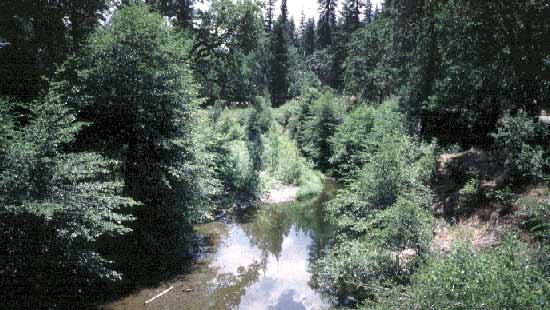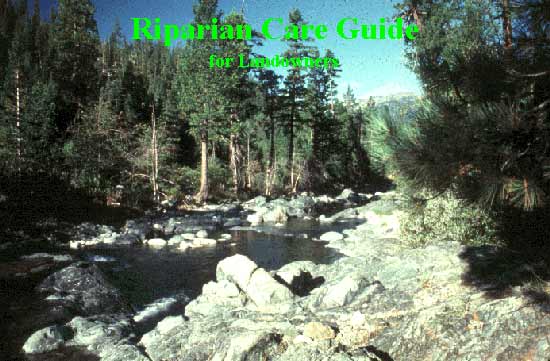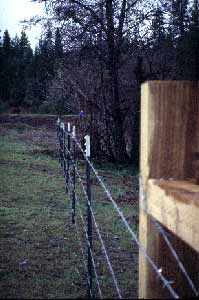
|
|

|
|
|
||||||||||||||||||||||||||||||||||||||||||||||||||||||||||||||||||||||||||||||||||||||||||||||||||||||||||||||||||||||||
| Trees | Shrubs | ||
|---|---|---|---|
| Common Name | Genus Name | Common Name | Genus Name |
| White Fir | Abies concolor | Willow | Salix species |
| Douglas Fir | Pseudotsuga menziesii | California Hazelnut | Corylus cornuta |
| Incense Cedar | Calocedrus decurrens | Gooseberry | Ribes species |
| Pacific Madrone | Arbutus menziesii | Western Azalea | Rhododendron occidentale |
| Black Cottonwood | Populus trichocarpa | Black Hawthorne | Crataegus douglasii |
| Bigleaf Maple | Acer macrophyllum | Wild Rose | Rosa gymnocarpa |
| Vine Maple | Acer circinatum | Western Raspberry | Rubus leucodermis |
| White Alder | Alnus rhombifolia | California Blackberry | Rubus vitifolius |
| Dogwood | Cornus species | Wild Grape | Vitis californica |
| Snowberry | Symphoricarpus albus | ||
The following is a list of nurseries that carry grass seed, trees, and shrubs that grow naturally in this area. Check with your local nursery to find out exactly which species would be best for your needs.
| Nursery Name | Address | Phone |
|---|---|---|
| Althouse Nursery | 5410 Dick George Rd, Cave Junction, OR 97523 | (541) 592-2395 |
| Bracken Garden Center | 3510 Eureka Way, Redding, CA 96001 | (530) 241-4653 |
| Califlora Nursery | P.O. Box 515, Oregon House, CA 95962-0515 | (530) 692-2565 |
| Cornflower Farms | P.O. Box 896, Elk Grove, CA 95759 | (530) 689-1015 |
| Freshwater Farms | 5851 Myrtle Ave, Eureka, CA 95503-9510 | (800) 200-8969 |
| Menziesí Natives Nursery | P.O. Box 9, Weed, CA 96094 | (530) 938-4858 |
| Plantco Nurseries, Inc. | 1960 Twin View Blvd, Redding, CA 96003 | (530) 244-1956 |
| Sunshine Nursery | 6310 Hwy 273, Anderson, CA 96007 | (530) 365-5521 |
| Trinity Nursery & Florist | 719 Main St, Weaverville, CA 96093 | (530) 623-3225 |
| Wyntour Gardens | 8026 Airport Rd, Anderson, CA 96007 | (530) 365-2256 |
| Albright Seed Co. | 189-A Arthur Rd, Martinez, CA 94553-2205 | (510) 372-8245 |
| Hawes Ranch & Farm Supply | 21923 Dersch Rd, Anderson, CA 96007 | (530) 365-2332 |
| Pacific Coast Seed | 6144-A Industrial Way; Livermore, CA 94550 | (510) 373-4417 |
| S&S Seeds | P.O. Box 1275, Carpinteria, CA 93014-1275 | (805) 684-0436 |
| Additional agencies to contact: | ||
|---|---|---|
| Agency | Address | Phone |
| California Department of Fish and Game | Box 1640, Weaverville, CA 96093 | (530) 623-1362 |
| Natural Resources Conservation Service | Box 1450, Weaverville, CA 96093 | (530) 623-3991 |
| United States Fish and Wildlife Service | 1125 16th St., Arcata, CA 95521 | (707) 822-7201 |
| United States Forest Service | Box 1190, Weaverville,CA 96093 | (530) 623-2121 |
| Trinity County Public Works | Box 2490, Weaverville, CA 96093 | (530) 623-5312 |
| Trinity County Resource Conservation District | ||
Things to Remember
- Take a walk every so often to check on your land and its resources.
- Consult your local planning department or government agencies before attempting major work in stream corridors. There may be special permits required or you may qualify for assistance.
- Be patient! Often any work that is done needs time to show its effectiveness.
| The health of an environment depends on those who use it! |
|---|

|
Return to the Trinity County RCD Home Page


